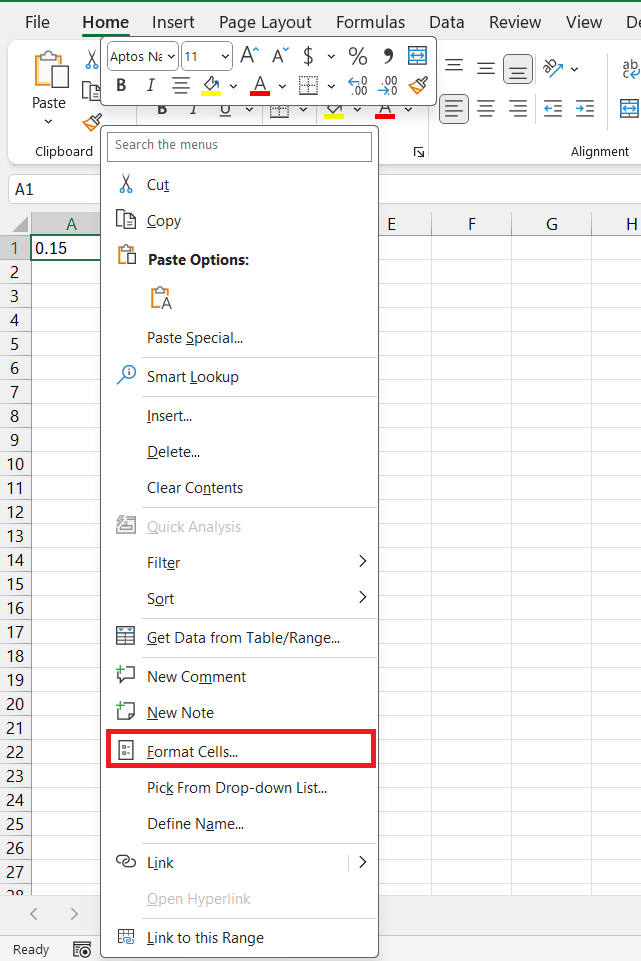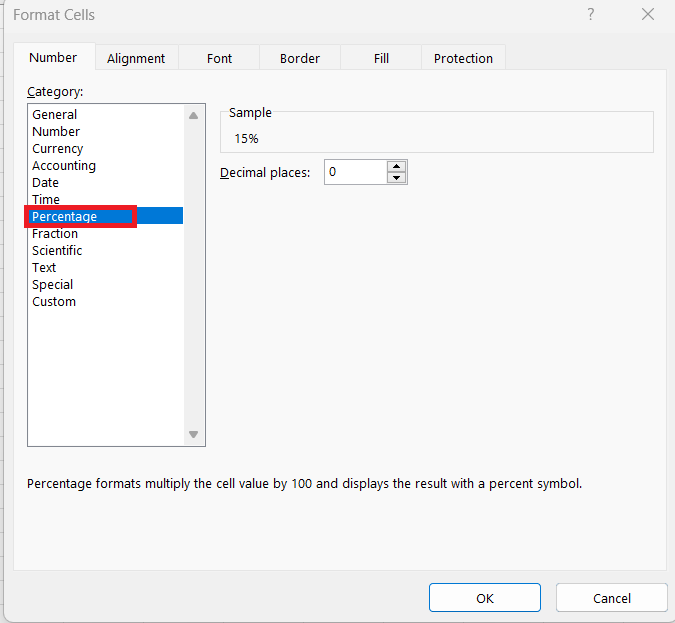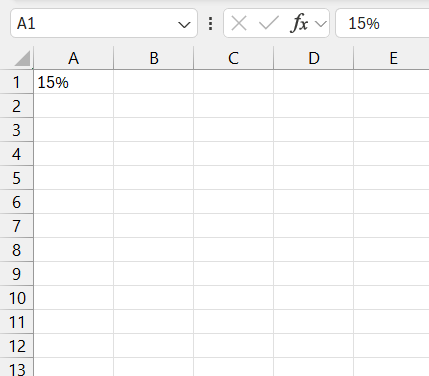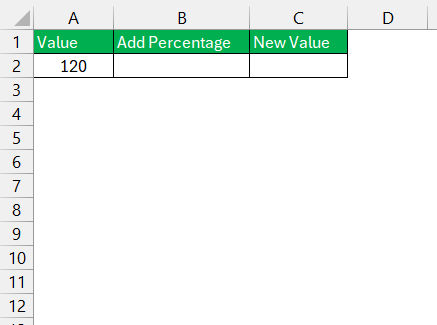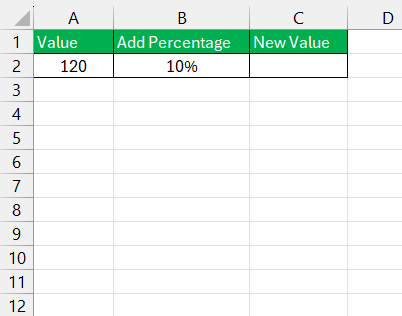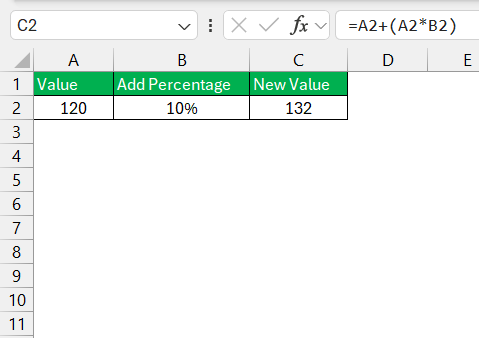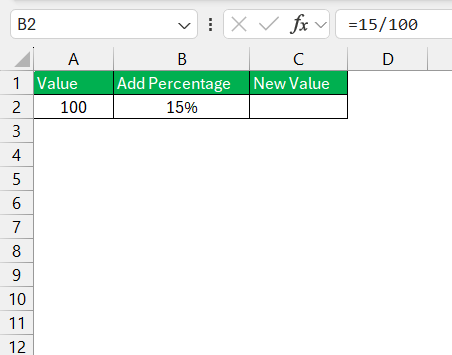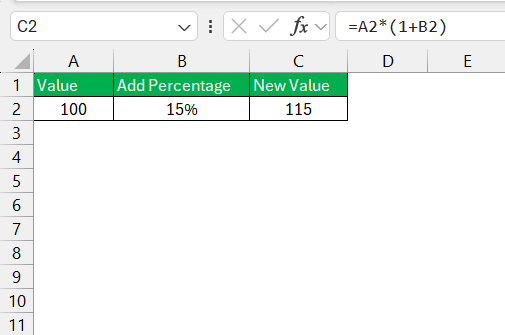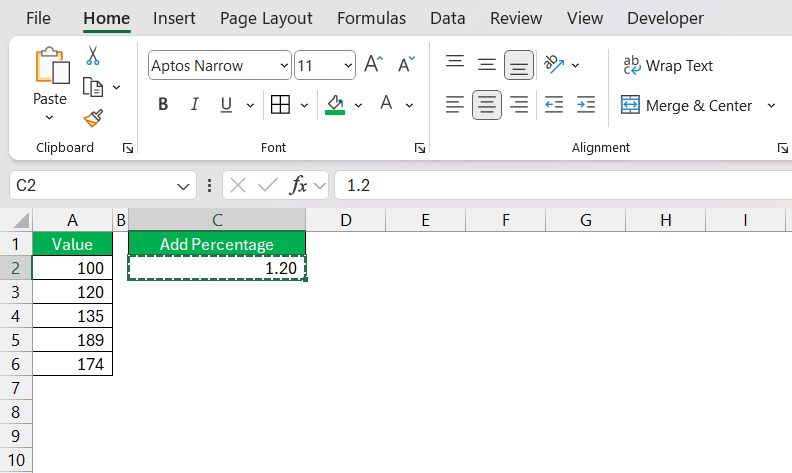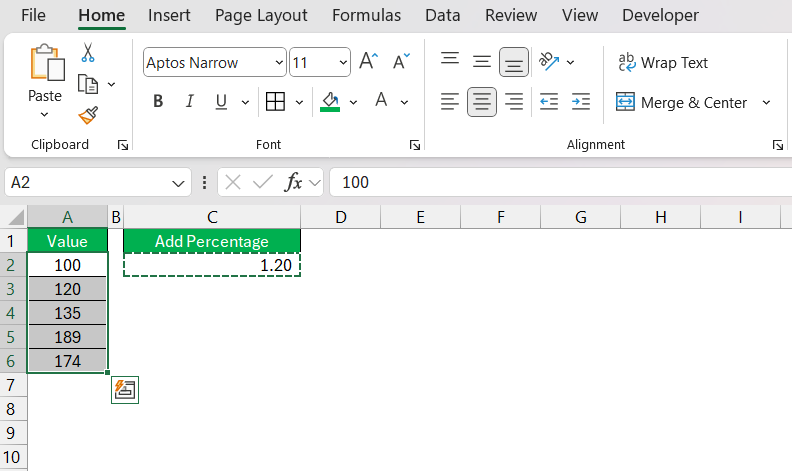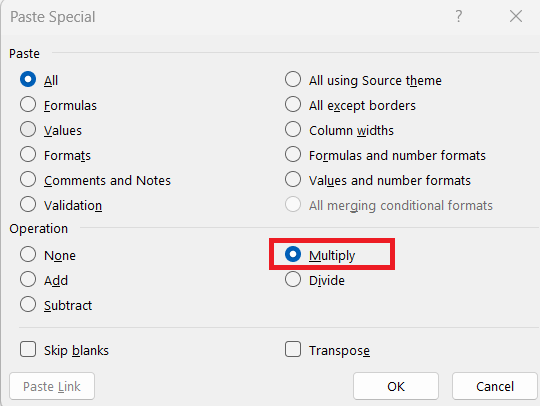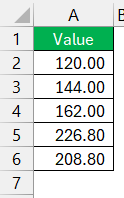Adding percentages in Excel can streamline your calculations and enhance your data analysis. In this article, I’ll walk you through various methods on how to add percentages in Excel, including using formulas and the Paste Special feature. Whether you’re updating prices or adjusting data, these techniques will make your percentage calculations quick and accurate.
Key Takeaways:
- Percentages as Decimals: Excel uses percentages as decimals (e.g., 50% = 0.50). Format cells as percentages for accurate calculations.
- Quick Addition: Use
=A2 + (A2 * B2)to add a percentage to a value, where B2 is the percentage in decimal form. - Multiplication Method: To increase a value by a percentage, use
=A2 * (1 + B2), with B2 as the decimal percentage. - Paste Special: Apply percentage increases to multiple cells using Paste Special by selecting ‘Multiply’.
- Excel Shortcuts: Use Ctrl + Shift + % for quick percentage formatting and F4 to repeat actions for efficiency.
Table of Contents
Master the Art of Adding Percentages in Excel
Understanding the Basics of Excel Percentages
When we dive into Excel, it is crucial to grasp that percentages are a bit more than just numbers with a percent sign tacked on; they are a representation of ratios. Excel treats percentages as decimal numbers, so 50% becomes 0.50, and this is how it processes percentage-based calculations.
To set the stage for adding percentages accurately, we first need to format our cells to display percentages. In Excel, we can do this by right-clicking on the cell or range of cells, and selecting ‘Format Cells…’.
We have to then choose the ‘Percentage’ option.
This tells Excel to interpret the number we type in as a percentage of 100. For instance, typing ‘0.15’ in a cell formatted as a percentage will display as ‘15%’.
How to Add Percentages in Excel
The Quick-Fire Addition Technique
The Quick-Fire Addition Technique in Excel is all about adding a certain percentage to a value swiftly, something often encountered in scenarios like mark-ups or tax calculations. This is how it’s done:
STEP 1: First, we place the number we want to increase by a percentage in a cell—let’s say A2.
STEP 2: Next, in another cell, we write the percentage we wish to add. If it is a 10% increase, we would type 0.10 into the cell B2.
STEP 3: In cell C2, which is where we want our result to appear, we enter the following formula: = A2 + (A2 * B2). This will calculate the original number plus 10% of that number.
The magic here lies in Excel treating the operation inside the parentheses first, multiplying the original value by the percentage, and then adding the result back to the original value, all in one fell swoop. It’s a clean, straightforward method that curtails error margins and boosts calculation speeds.
Multiplication: Your Gateway to Percentage Increase
Multiplication is the silent workhorse behind percentage increase tasks in Excel. If we want to hike up a value by a percentage, we use multiplication because it seamlessly scales the value up by the proportion needed.
To illustrate, let’s say that in cell A2, we have our original price of $100 which we want to increase by 15%. First, we convert our percentage to a decimal by dividing it by 100—thus, 15% becomes 0.15. Then, we follow these simple steps:
STEP 1: In cell B2, we type 15% or 15/100.
STEP 2: To get the increased price, we enter this formula in cell C2: =A2 * (1 + B2).
The result in C2 will be $100 plus 15% of $100, which equals $115.
What the formula is doing is essentially multiplying the original number by a factor that represents 100% of itself plus the additional percentage. It’s a swift, elegant way to bump up numbers, whether it’s for salary increases, indexing, or adjusting for inflation in financial models.
Excel Features That Make Your Life Easier
Unlocking the Power of Paste Special
One of Excel’s lesser-known yet powerful features is the Paste Special function, which I’ve personally found to be a lifesaver when dealing with data manipulation. The Paste Special dialog allows us to execute operations like addition, subtraction, multiplication, and division on a cell range without typing in any formulas.
To use Paste Special for adding percentages:
STEP 1: Enter the percentage to add as a decimal in a cell, for example, 1.2 for a 20% increase. Then, I copy this cell.
STEP 2: Next, I select the range of cells where I want to apply the increase.
STEP 3: I then right-click the highlighted area, selecting ‘Paste Special’. A dialog box appears, and from there, I choose ‘Multiply’.
STEP 4: After clicking ‘OK’, I watch as Excel instantly increases the values in the selected cells by the specified percentage.
It’s as straightforward as that. Using Paste Special is remarkably efficient, especially when applying the same operation across multiple cells. It allows me to bypass the need for intermediate steps or additional formulas, making bulk calculations surprisingly fast and error-free.
Tips and Tricks for Excel Efficiency
Shortcuts to Save You Time
Excel is equipped with an array of shortcuts designed to cut down the time I spend on repetitive tasks. They become second nature with practice, enabling me to work at a much faster pace.
For manipulating percentages, one of the most invaluable shortcuts is the Ctrl + Shift + %. After highlighting the cells containing numbers that I want to convert to percentages, I can instantly transform them simply by pressing these keys. And for more complex tasks, I rely on the F4 key to repeat my last action, which can be a significant time-saver when applying the same formatting or adjustment to different cell ranges.
Another essential, yet often overlooked shortcut, involves the Alt key. By pressing Alt, followed by specific key sequences, I access ribbon commands without even touching my mouse. For example, to quickly increase the decimal places, I can press Alt, H, 0 and to decrease them, it’s Alt, H, 9.
These shortcuts help me keep my workflow smooth and uninterrupted, especially when performing extensive data analysis or report generation.
Troubleshooting Common Percentage Problems
Why Isn’t Excel Showing My Percent Values Correctly?
If Excel isn’t displaying percent values correctly, chances are the cell formatting is not set to the percentage type or the data isn’t inputted in a way Excel interprets as a percentage. The solution starts with checking the cell’s format: Right-click the cell, select ‘Format Cells,’ and ensure the ‘Percentage’ category is selected. If the numbers are meant to be under 100%, they should be entered as decimals (like 0.5 for 50%).
Another factor could be the presence of unseen characters or spaces entered with the data, which Excel might not recognize as numeric. Using the ‘CLEAN’ or ‘TRIM’ functions can help remove these and correct the display issue.
And sometimes, it’s a matter of Excel rounding numbers when we want to see more decimal points for accuracy. In this case, I increase the decimal places displayed via the Home tab or the Format Cells dialog to see the values in their granular form.
Overcoming Issues with Percentage Formulas
Running into problems with percentage formulas can be quite a snag, but with a few checks and adjustments, these issues can be overcome. If a formula isn’t calculating as expected, the first thing I do is verify that all cell references and formula syntax are correct. A common oversight might be that cell references got displaced, especially if rows or columns were added or deleted.
Another issue could arise from mixed references—where part of the formula incorrectly combines absolute and relative references. This becomes apparent when copying formulas across cells, and the fix usually involves adjusting the cell references by adding or removing dollar signs ($) in the formula, which either fix or allow the reference to change.
If I’m still stumped on why the formula isn’t working after these checks, I use the ‘Evaluate Formula’ feature in Excel. It walks me through each step of the formula’s calculation, revealing precisely where things go awry.
Lastly, the usage of parentheses can be essential; they dictate the order in which Excel performs the calculation. If the formula involves complex operations, I ensure parentheses group parts of the formula to execute in a specific sequence.
FAQ
How do you add percentages in Excel formula?
To add percentages using an Excel formula, you enter the original number in a cell and the percentage to add in another cell as a decimal. For example, to add 20% to the value in cell A1, type =A1 + A1*0.2 or =A1 * (1+0.2) in a different cell. Press Enter, and the resulting cell will show the increased value.
How Can I Apply a Percentage Increase to Multiple Cells Simultaneously?
To apply a percentage increase to multiple cells simultaneously in Excel, type the percentage increase as a decimal into any cell, copy that cell, select the cells to increase, right-click on them, and choose ‘Paste Special’. In the dialog box, select ‘Multiply’ and click ‘OK’. This will increase all the selected cells by the copied percentage.
What Should I Do If My Percentage Calculation Isn’t Correct?
If your percentage calculation isn’t correct, double-check the formula for accuracy and ensure that cell references are placed correctly. Confirm that cells are formatted correctly to display percentages and that you have entered the percentage as a decimal. Use ‘Evaluate Formula’ under the Formulas tab for a step-by-step examination of the formula if the issue persists.
How do I add 20% to a price in Excel?
To add 20% to a price in Excel, enter the price into a cell (say A1), and use the formula =A1*1.2 in another cell. This calculation takes the original amount and increases it by 20%. Press Enter, and the cell will display the new price with the addition of 20%.
What is the percentage formula in excel?
The percentage formula in Excel is =Part/Total, which gives a decimal value. To display it as a percentage, format the cell as ‘Percentage’ or multiply the result by 100. For example, to calculate what percentage 50 is of 200, you would use =50/200, which yields 0.25, and when formatted as a percentage, it shows as 25%.
John Michaloudis is a former accountant and finance analyst at General Electric, a Microsoft MVP since 2020, an Amazon #1 bestselling author of 4 Microsoft Excel books and teacher of Microsoft Excel & Office over at his flagship MyExcelOnline Academy Online Course.

